This post contains affiliate links. If you make a purchase through these links, I may earn a commission at no extra cost to you. Thank you!
After camping for six nights and having our tent flooded in a storm, we decided to move to an actual house in Tórshavn, the capital of the Faroe Islands, which we had borrowed from Andras’ lovely family. Our original plan was to camp on several islands for two weeks before moving to Tórshavn, but instead, Tórshavn now became our base for exploring the islands, which wasn’t a bad thing at all. This was the second time that the same tent has been flooded in the Faroe Islands (first time was in March 2015), so maybe we will be third time lucky next time? Or maybe I should just buy a new tent…
We still had 12 days left to explore the country, and while a few of those days were spent relaxing (and shopping) in the capital, we were eager to get out into the wild nature and do some more hiking. One of our first trips outside of Tórshavn was to Eysturoy with Vianney and Gaëtane, who we had been on a roadtrip on Kalsoy with two days prior.

Vianney and Gaëtane picked us up early in the morning and then we set off to Eysturoy and Slætteratindur, the highest mountain on the Faroe Islands, which was our planned destination for the day. We wanted to climb Slætteratindur, which is something I’ve always wanted to do, but for some reason not had the chance to, and unfortunately, this day was no different.
When we got to Slætteratindur, the fog was so thick that we couldn’t even see the top of the mountain, which despite being the highest in the country is only 880 m. high. We did see some other hikers attempting the climb, but after everything that we had been told about not hiking in fog by locals, we decided not to chance it.
Instead, we headed to Gjógv, a popular tourist destination in the northern part of Eysturoy, where I had read about another hike, which I thought would be a good alternative to the mountain.
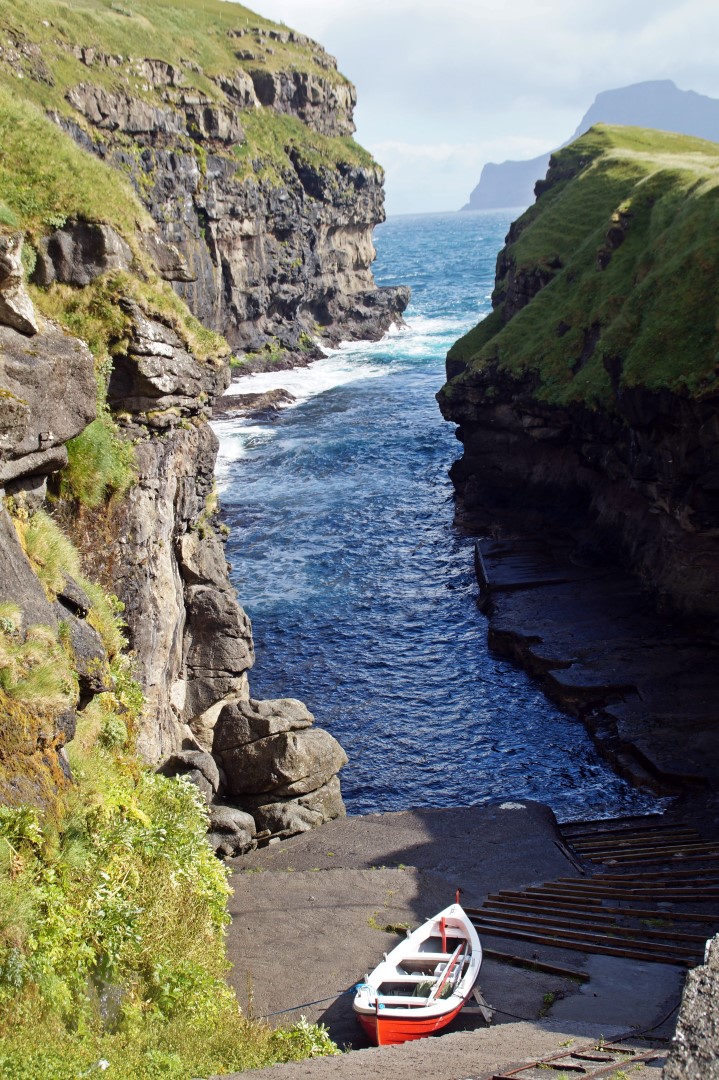
The hike went over the hills in Gjógv at over 400 m., along the dramatic coastline out to Ambadalur, a beautiful valley northwest of Gjógv, where there is a wonderful vista out over the highest sea stack in the Faroe Islands, Búgvin at 188 m.
The first part of the hike was the toughest. According to the tourist books, the hike is supposed to be easy and accessible for everyone, but I would only recommend it to those in good shape because of the steep ascent from the village.
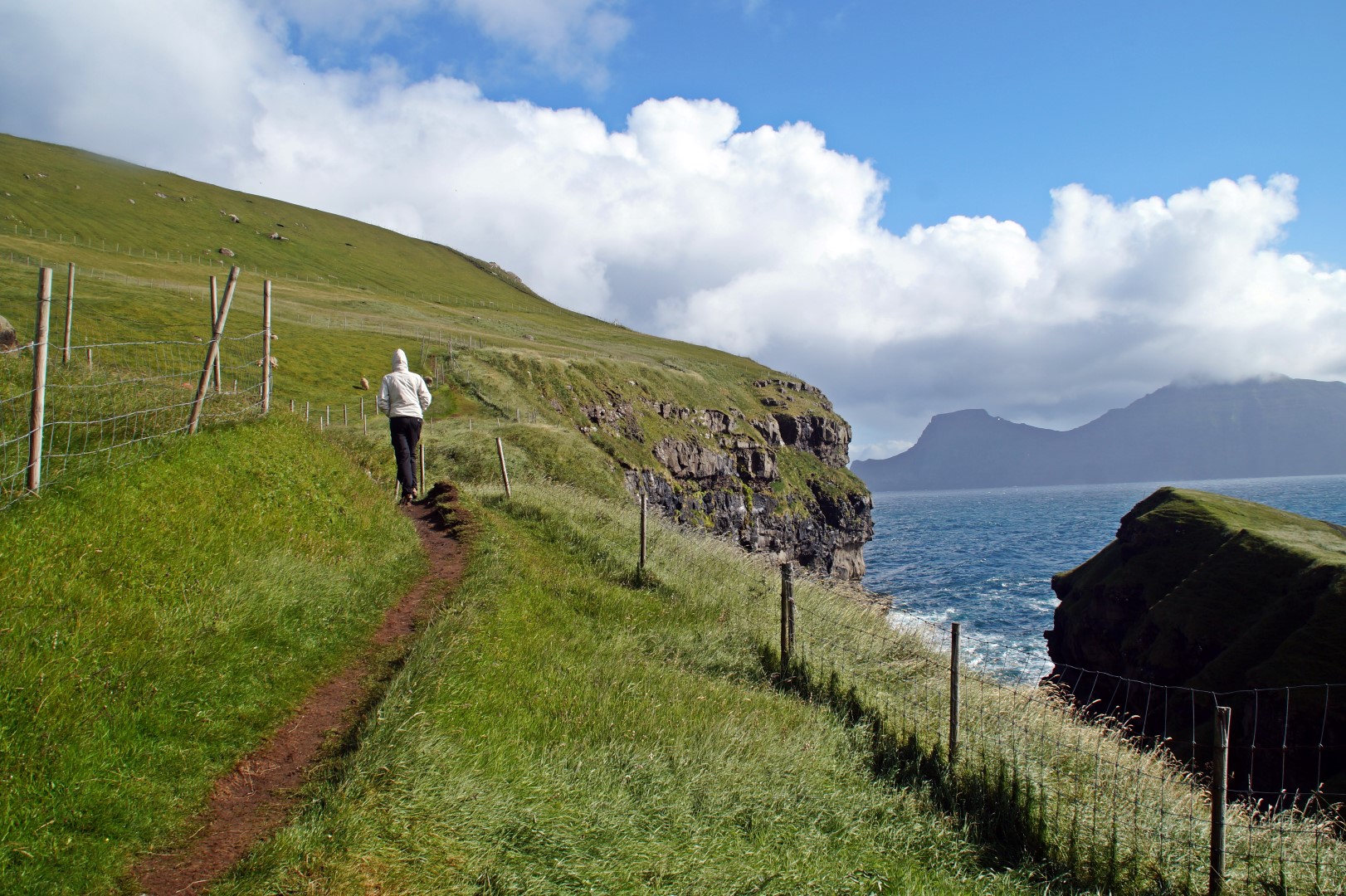

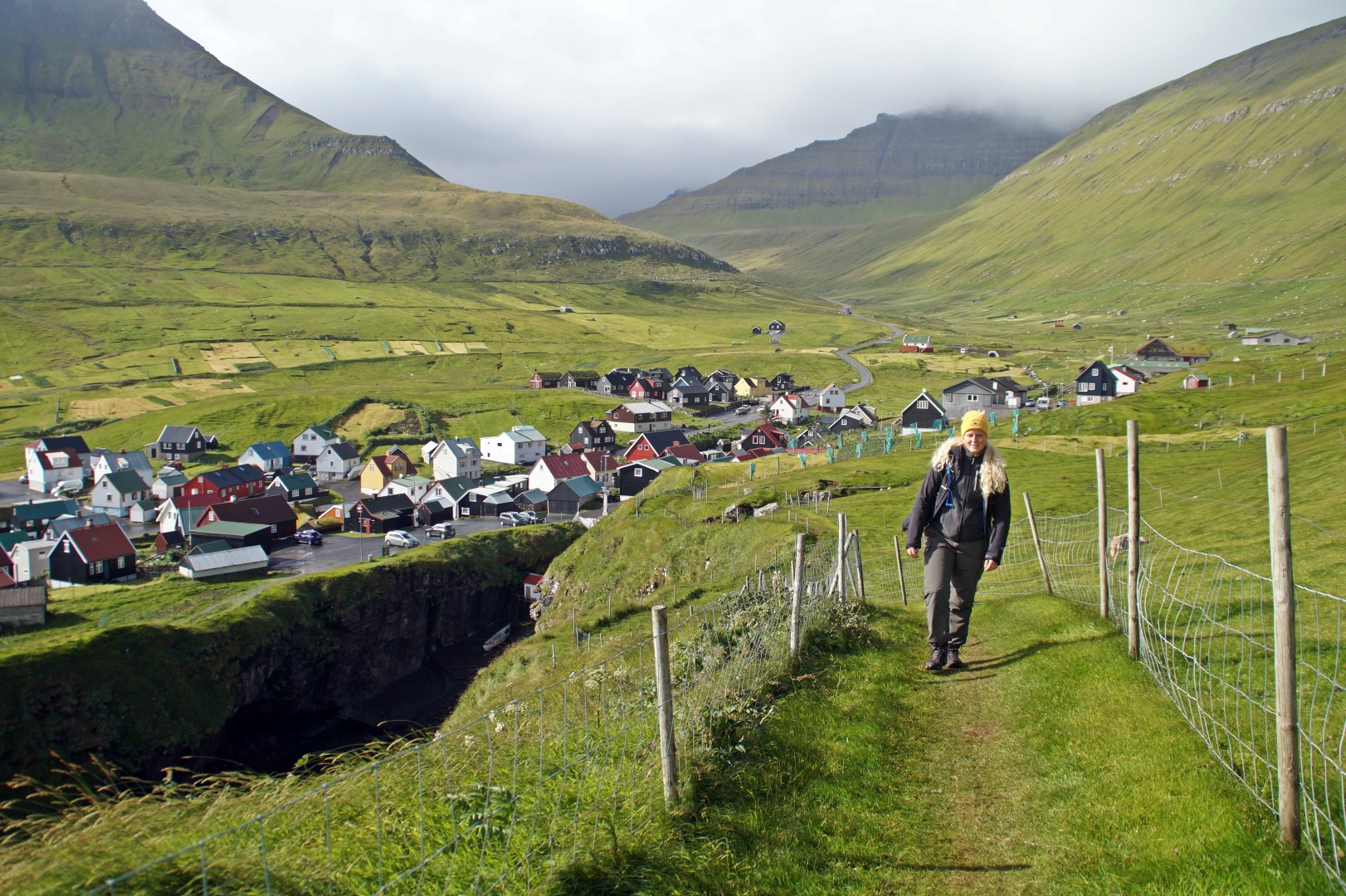
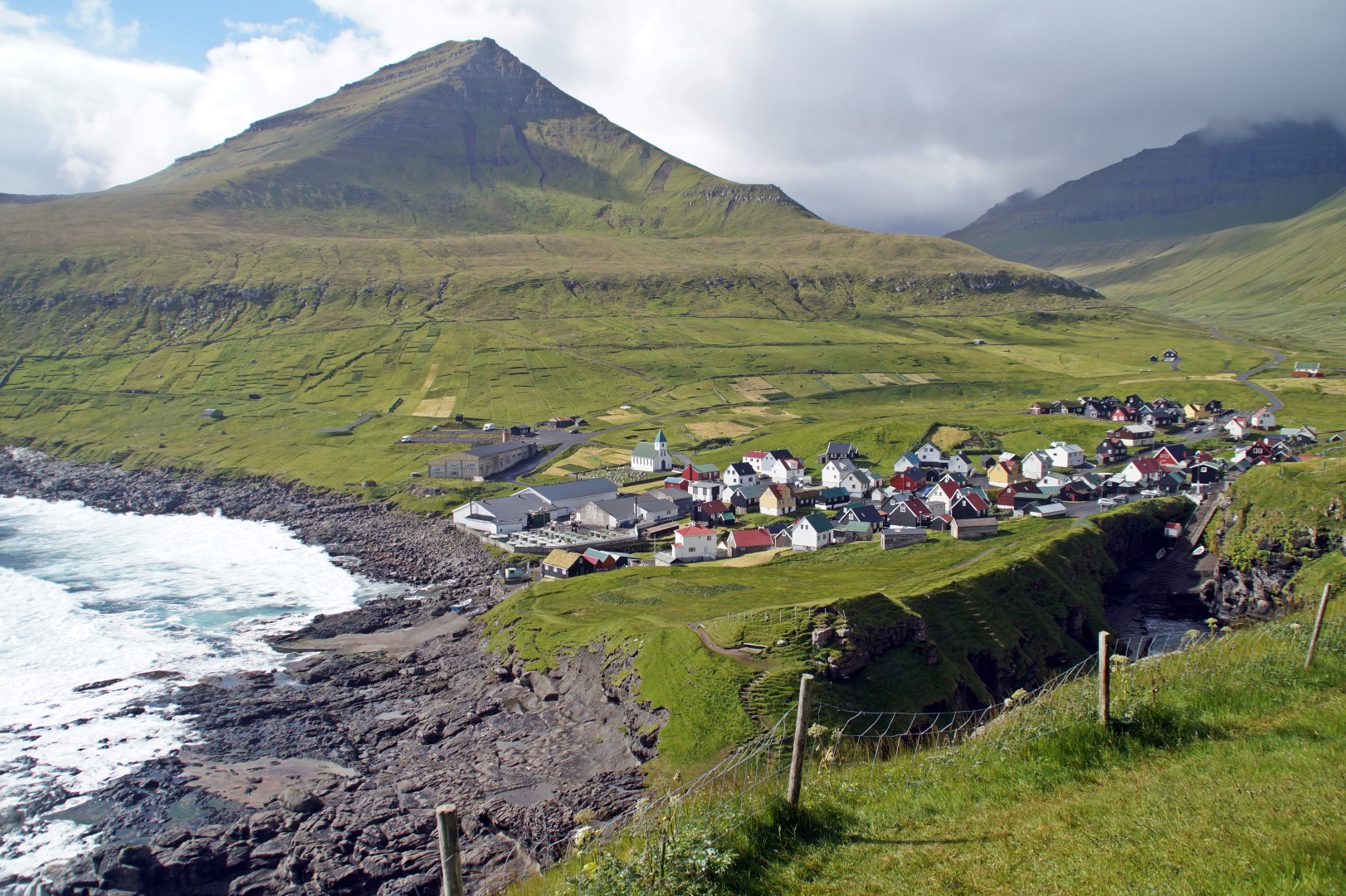
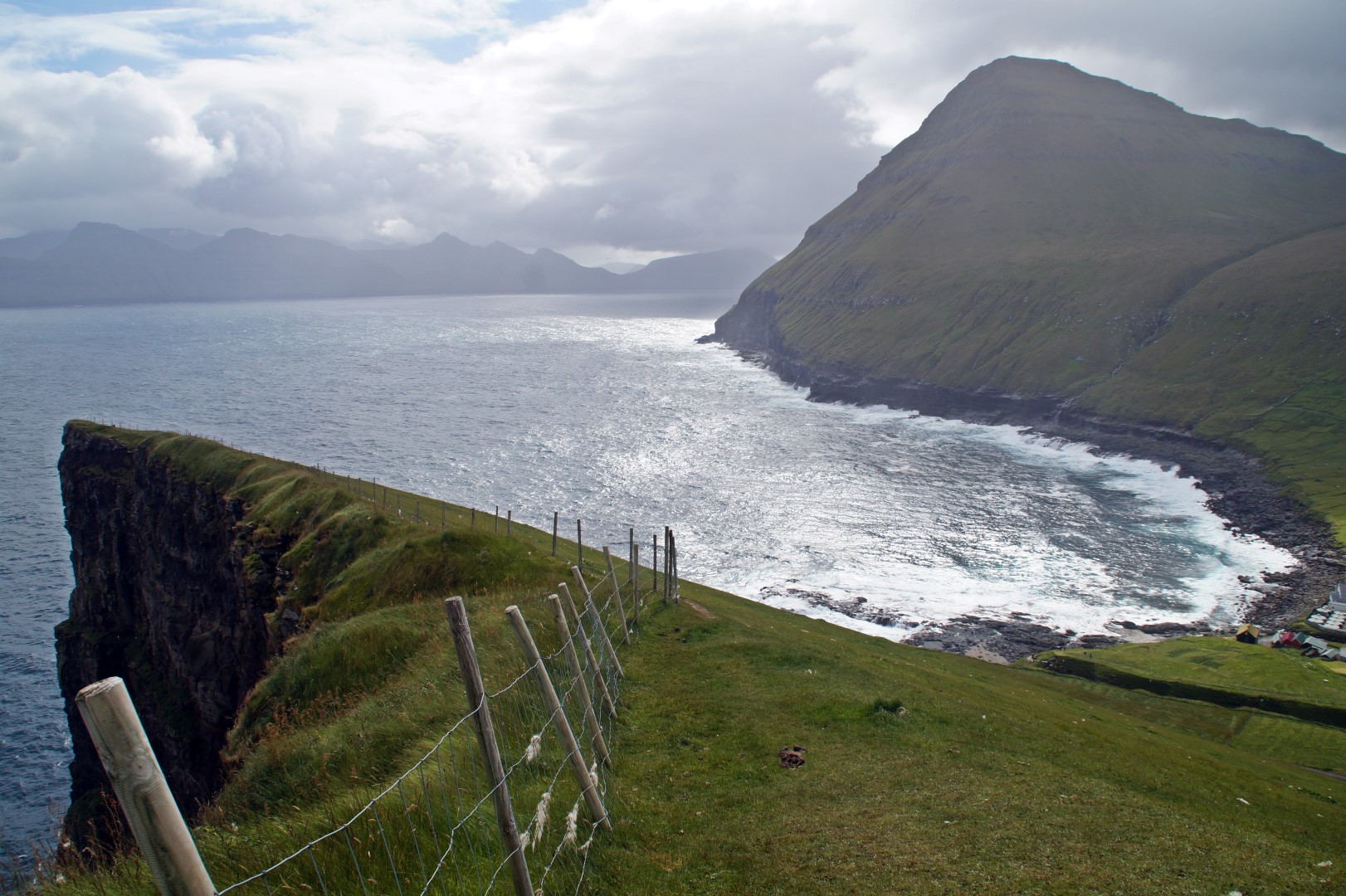
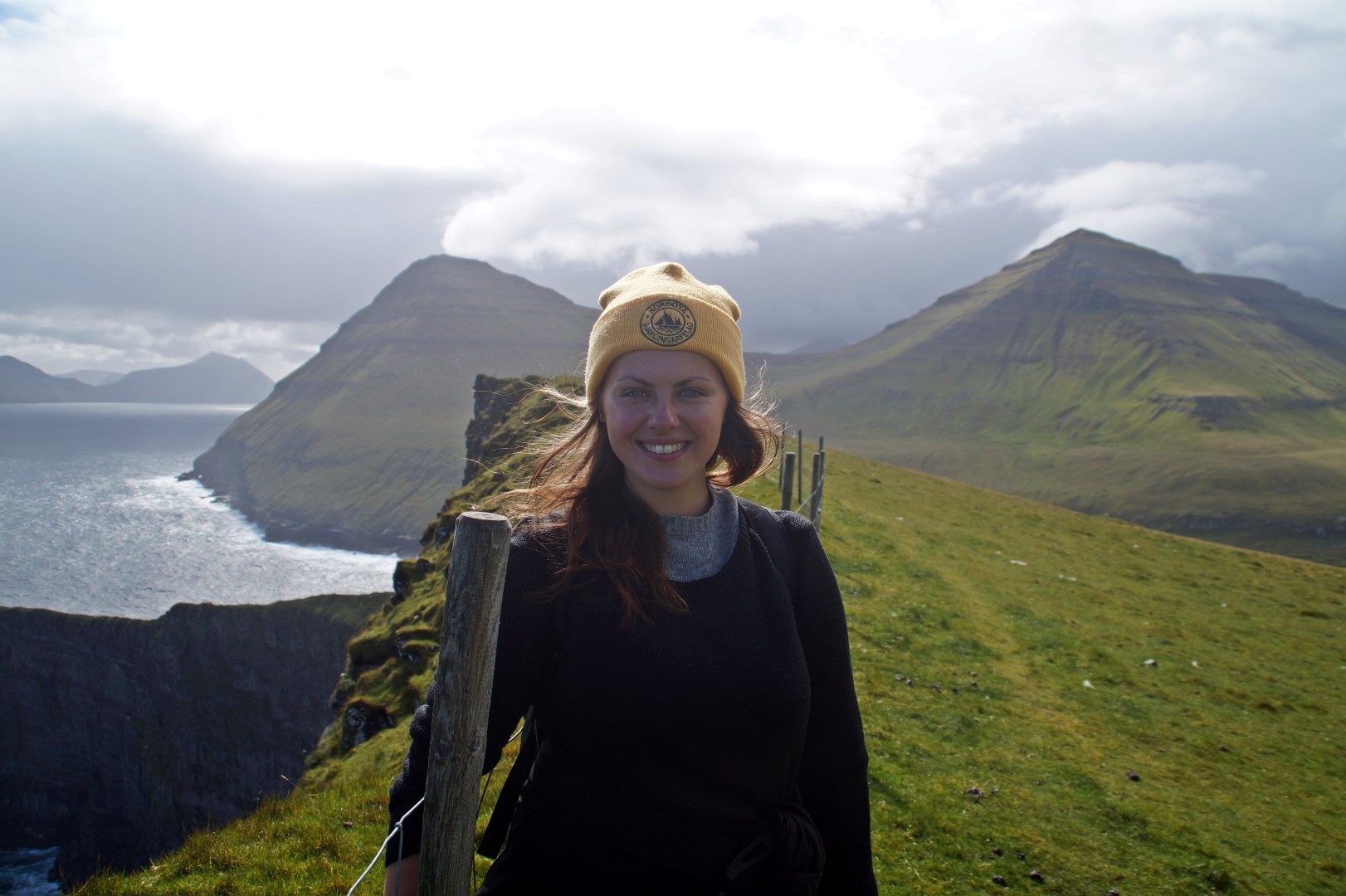
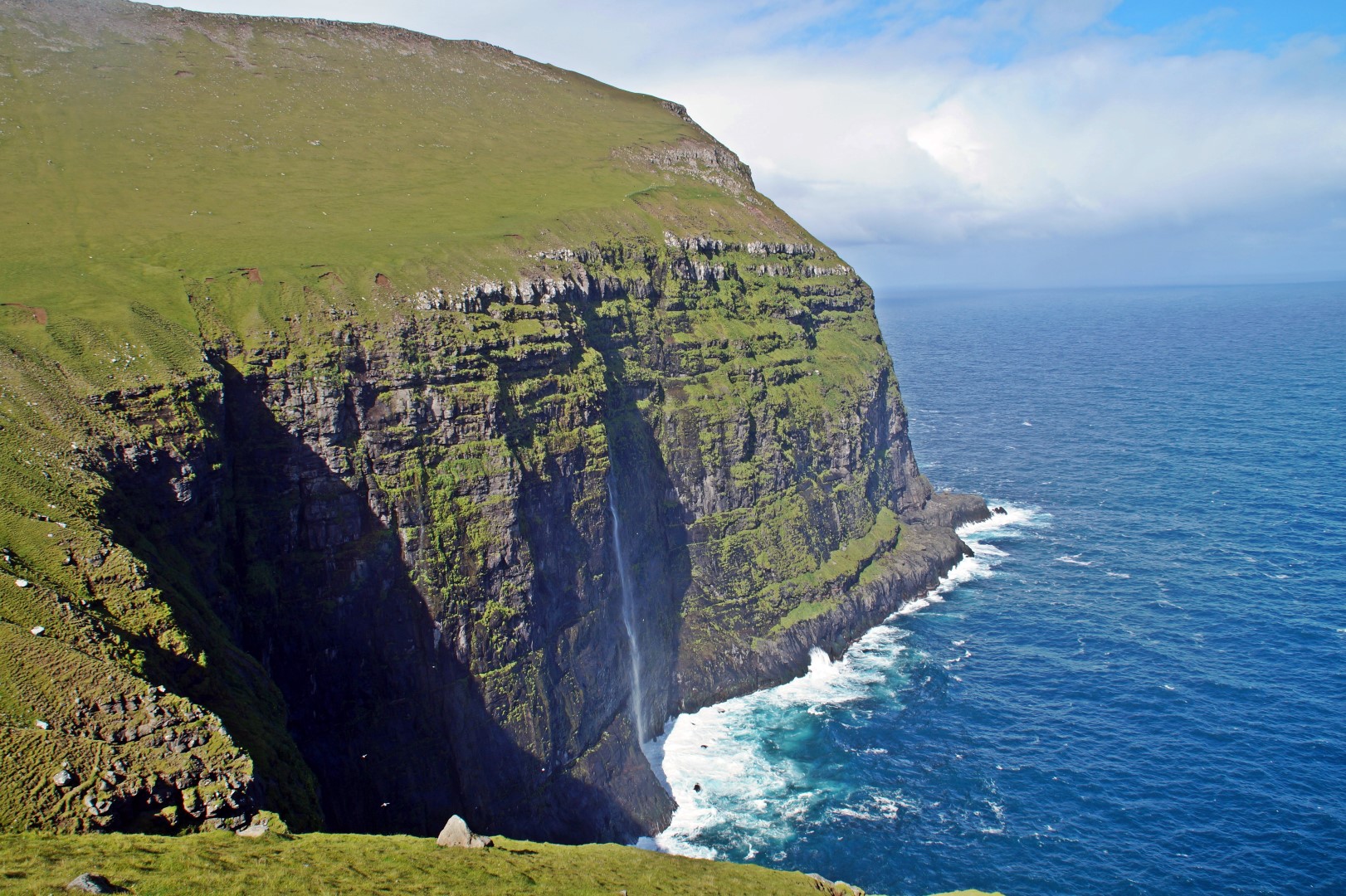

After the first ascent, it was time to walk away from the coastline and towards the mountains west of the village. At some point, Vianney went ahead of us and, thinking that we had lost him, we decided to climb the nearby mountain, Fjallið at 469 m., to see if we could find him up there. And sure enough, after a small investigation, we found him up there. It wasn’t very dramatic, and at least we now have another mountain to tick off the list!
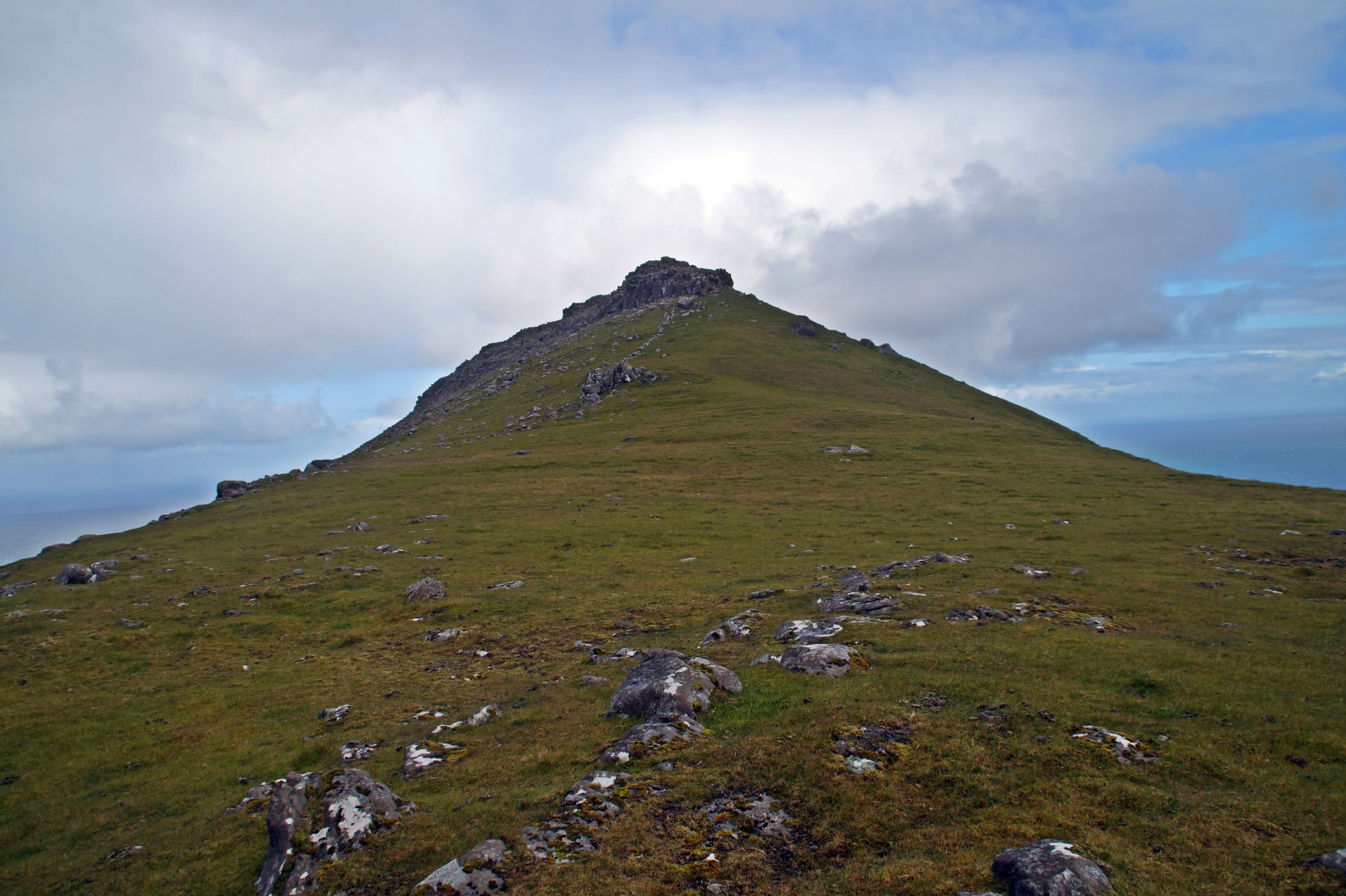
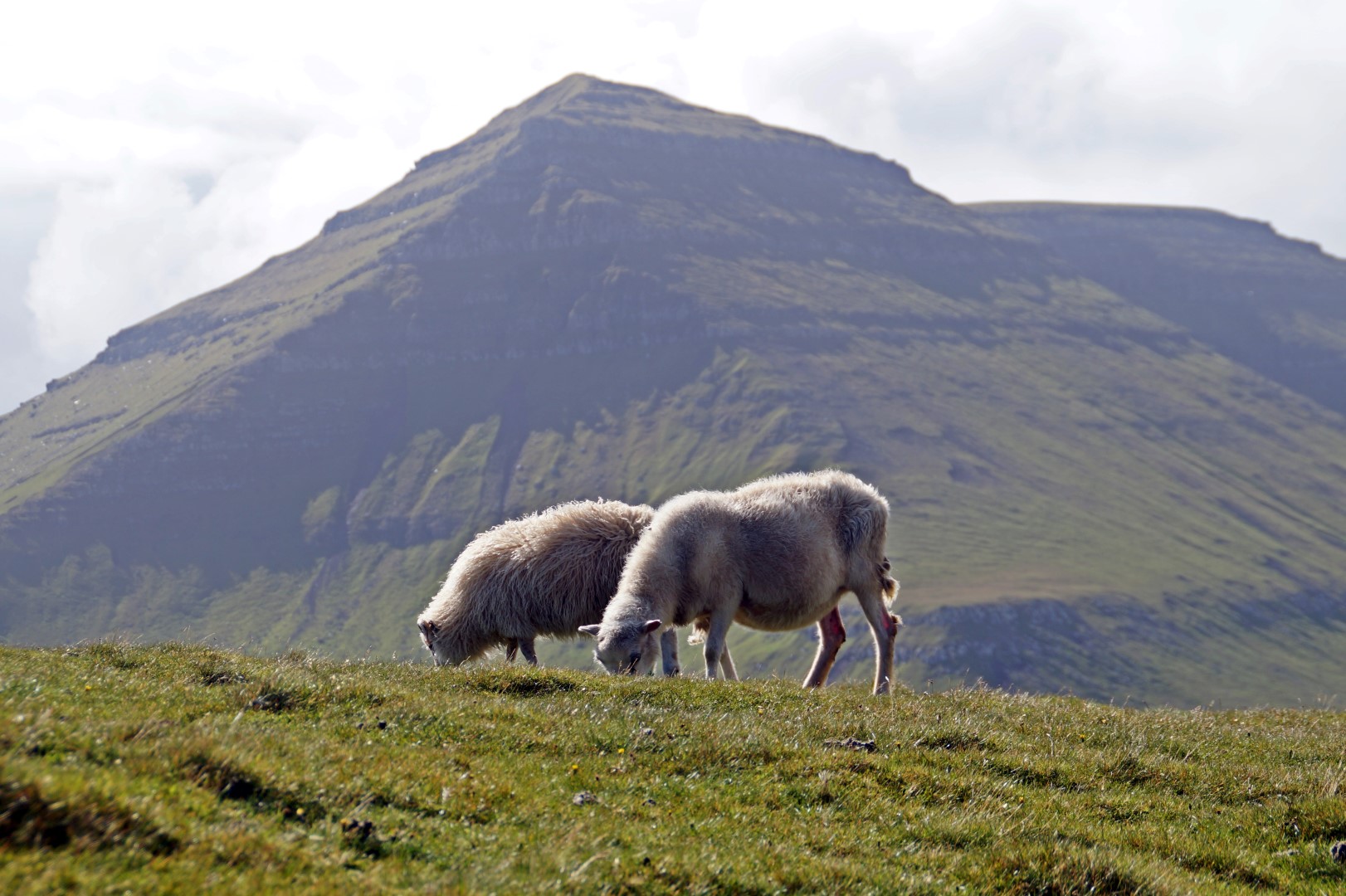
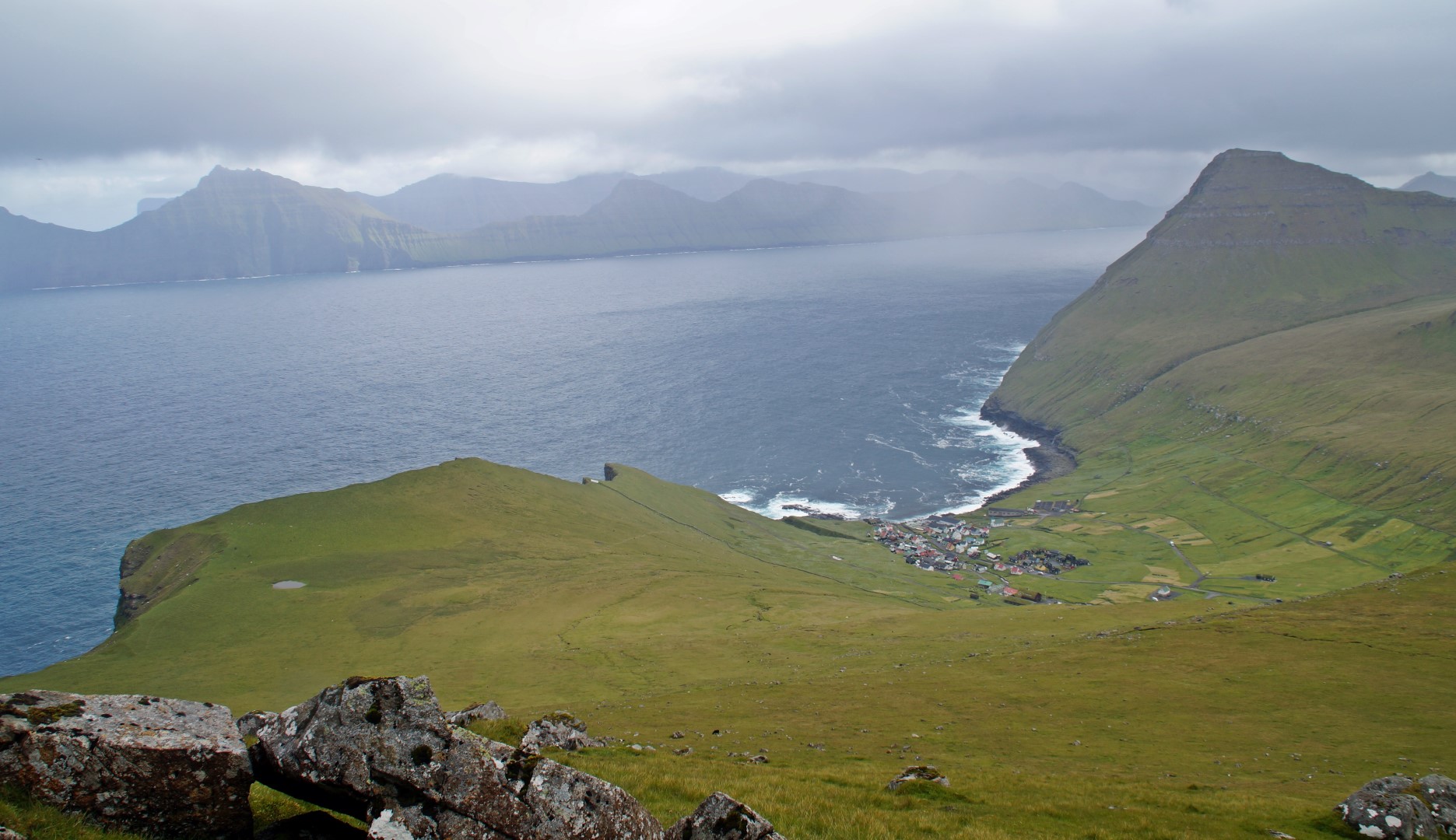
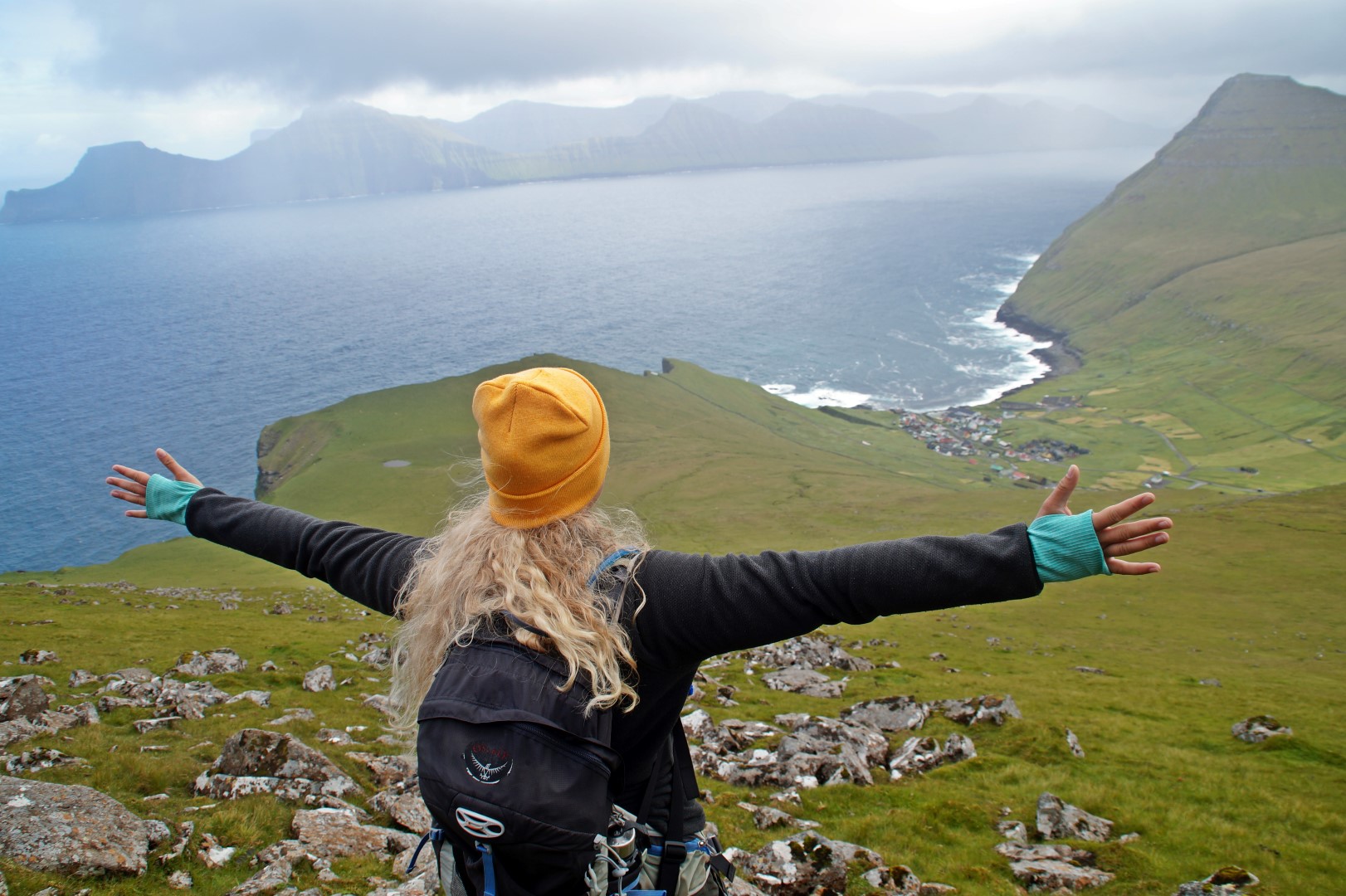
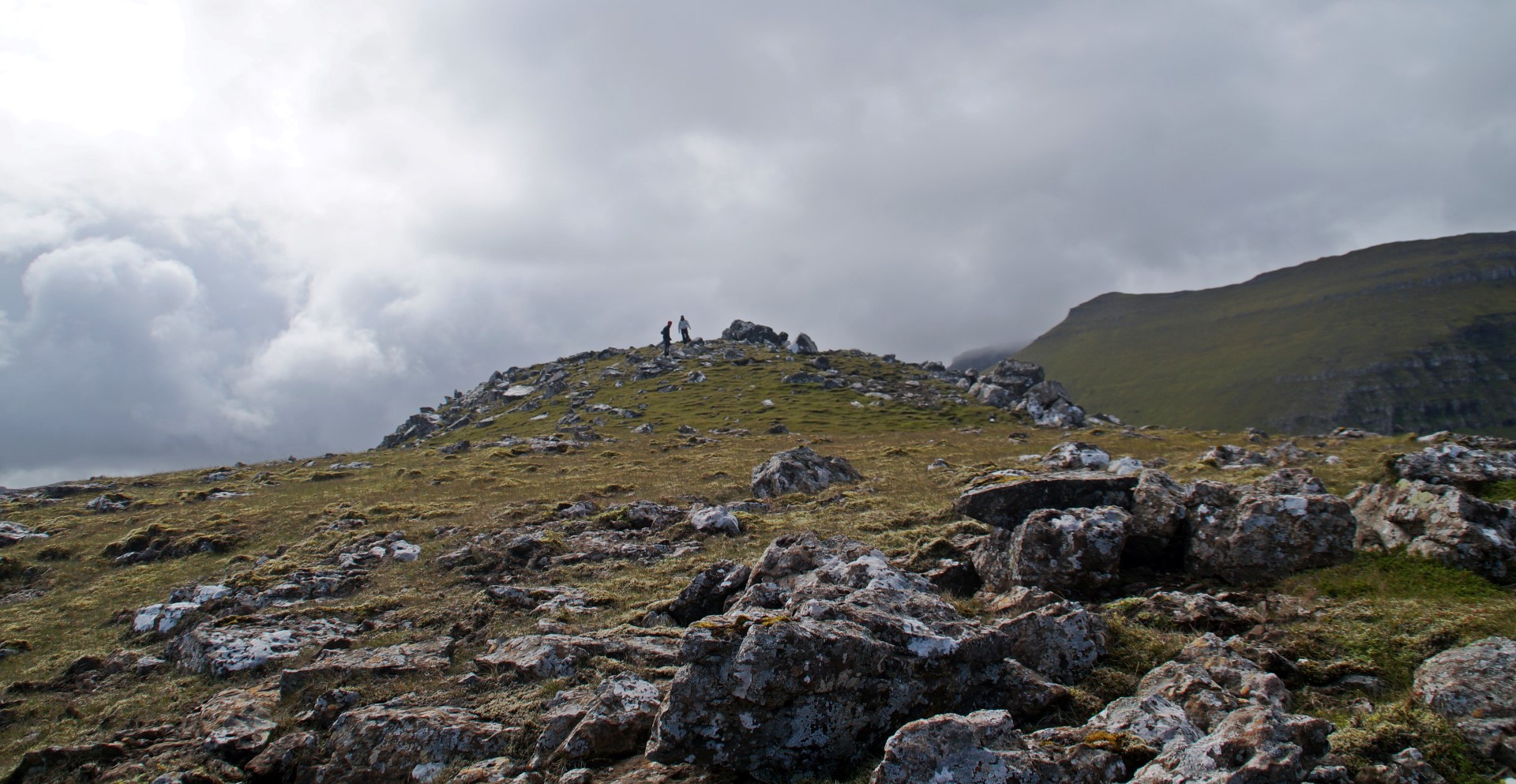
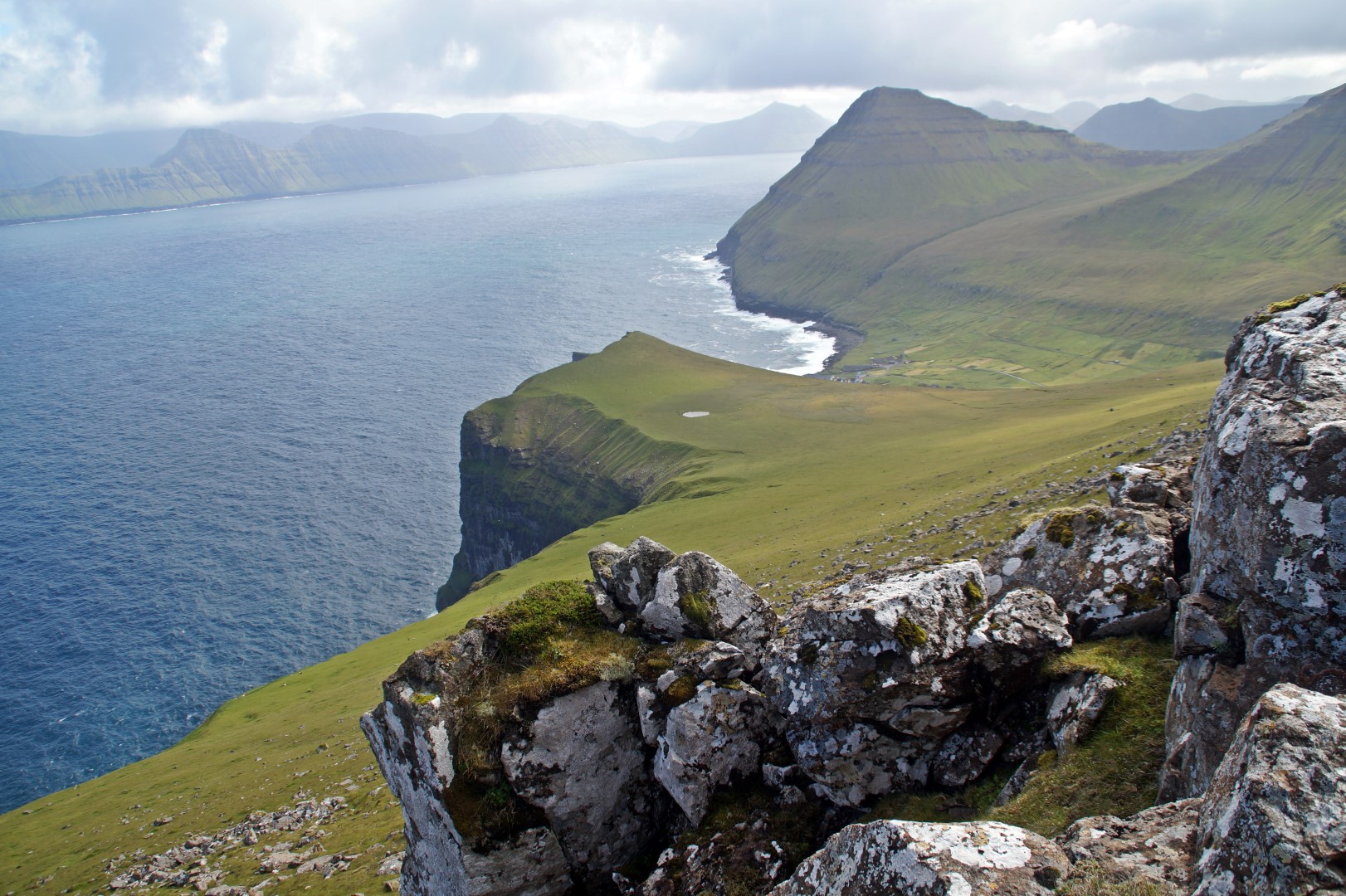
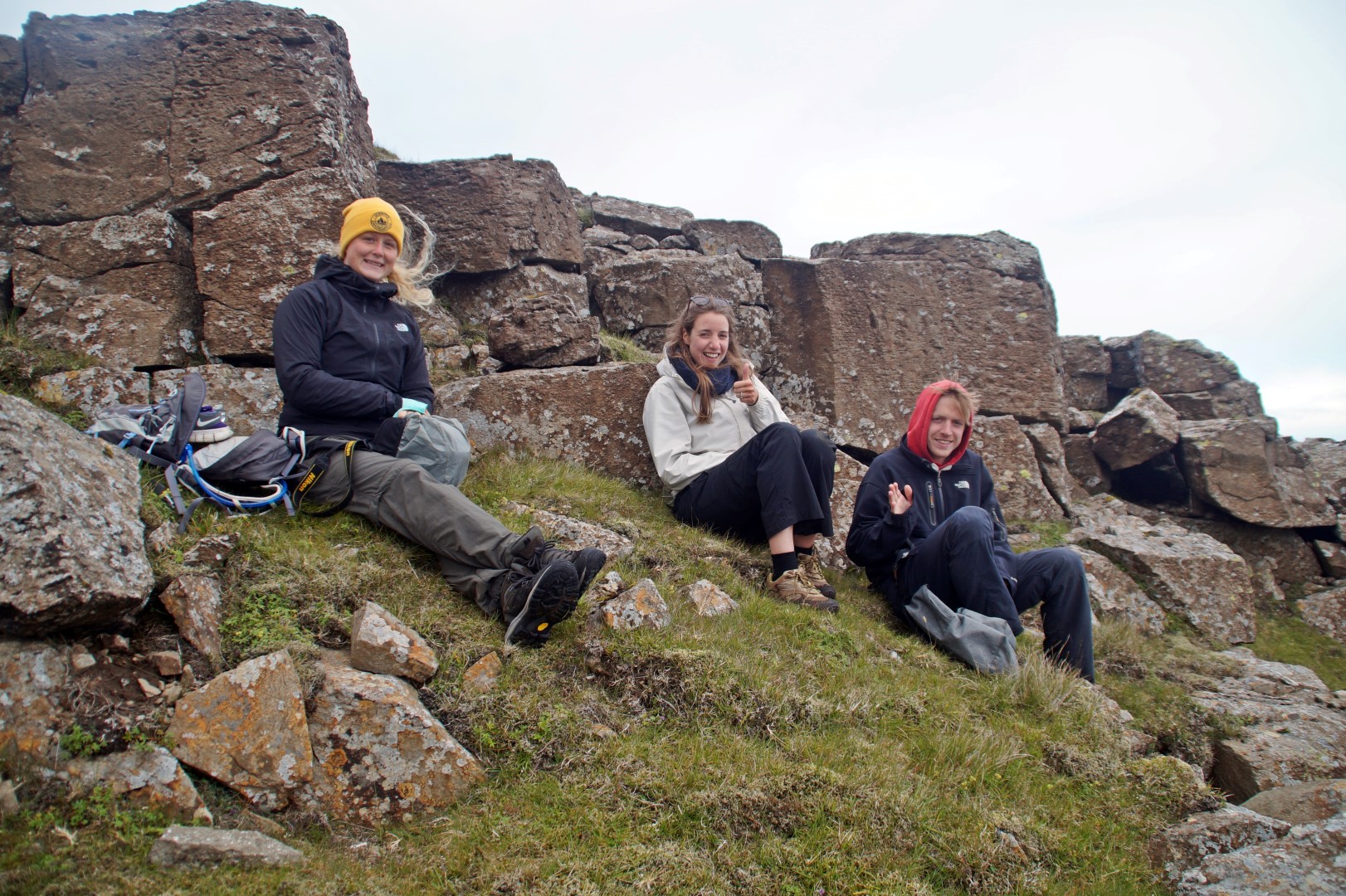
After we had all been reunited, it was time to head down through the idyllic Ambadalur valley to the coast, where we would be able to see Búgvin. On the way down, Vianney and Gaëtane saw puffins, which is really exciting, as they’re rarely seen outside of Mykines!
Finding Búgvin was easy once we got down to the valley and it was quite special to see all the birds nesting and flying around the remote sea stack. It was like total bird paradise!
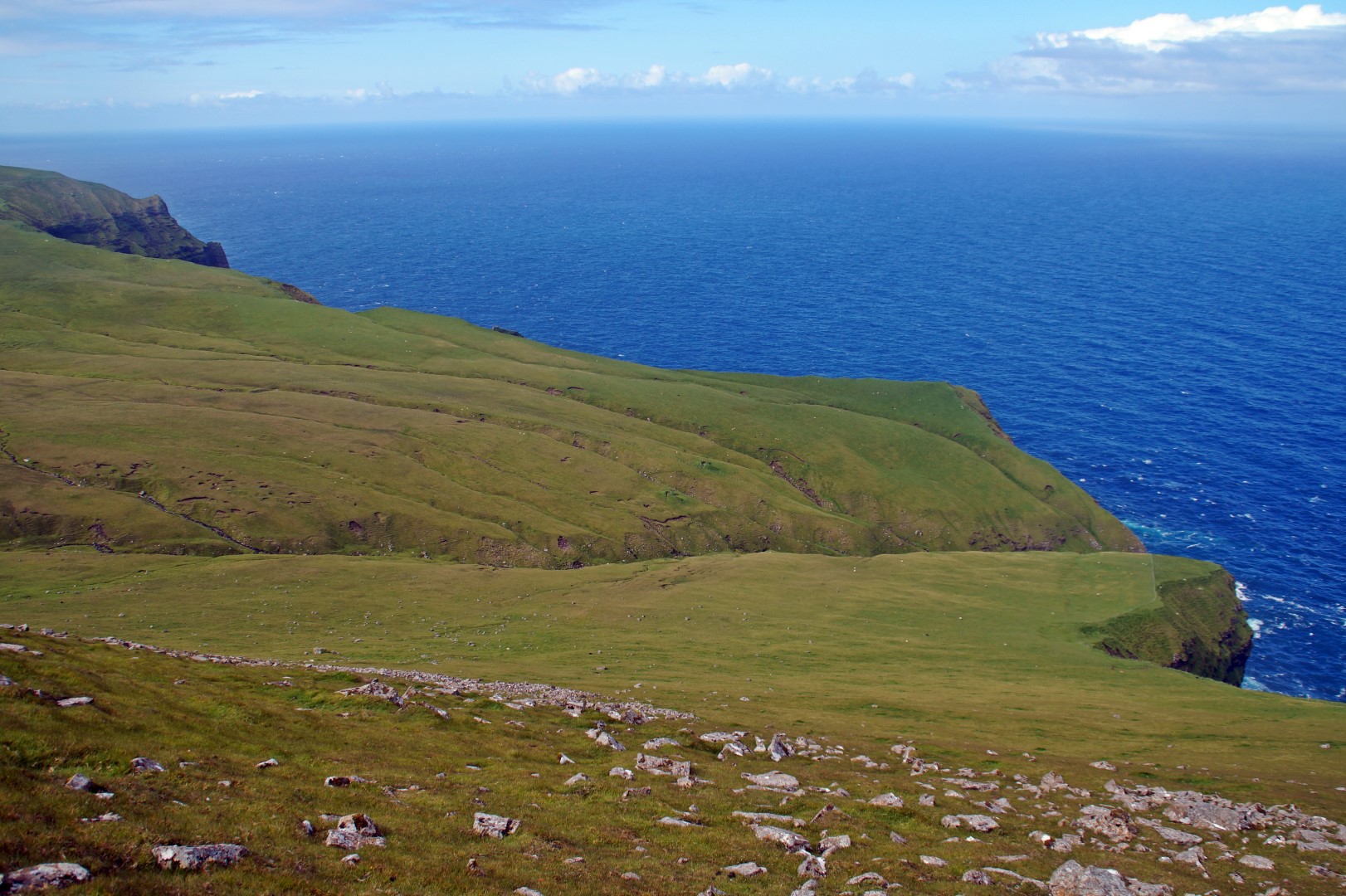
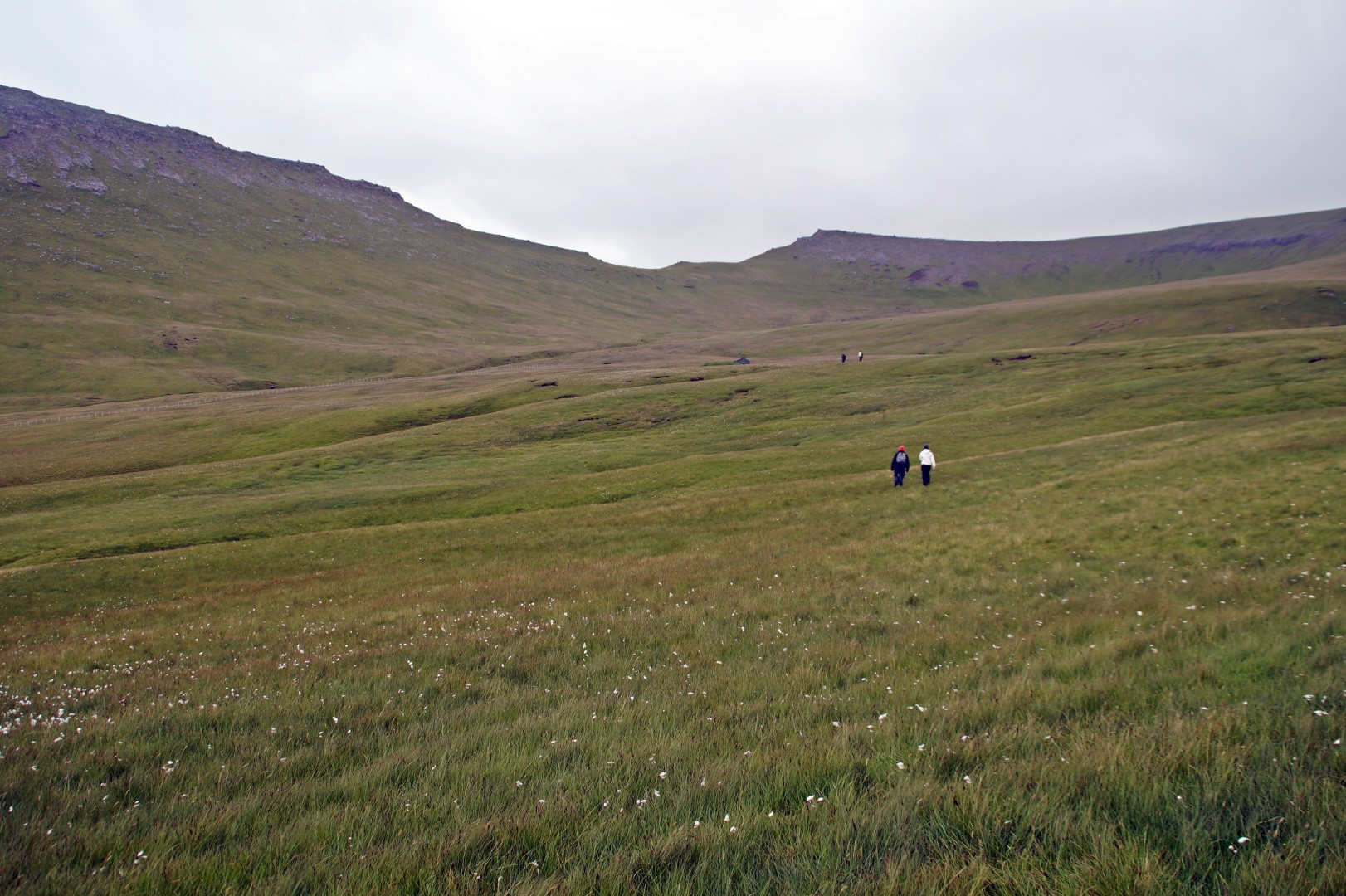

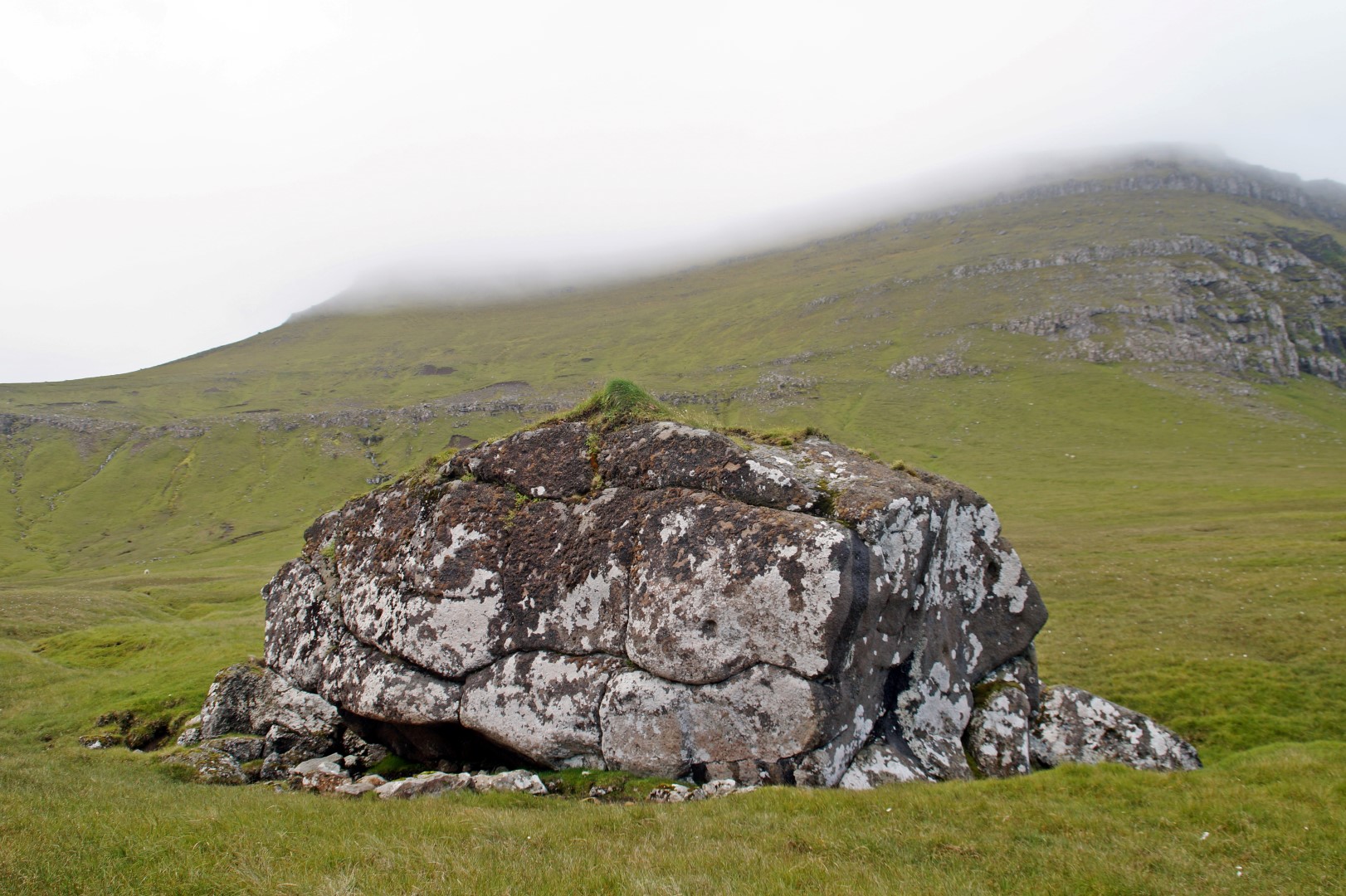
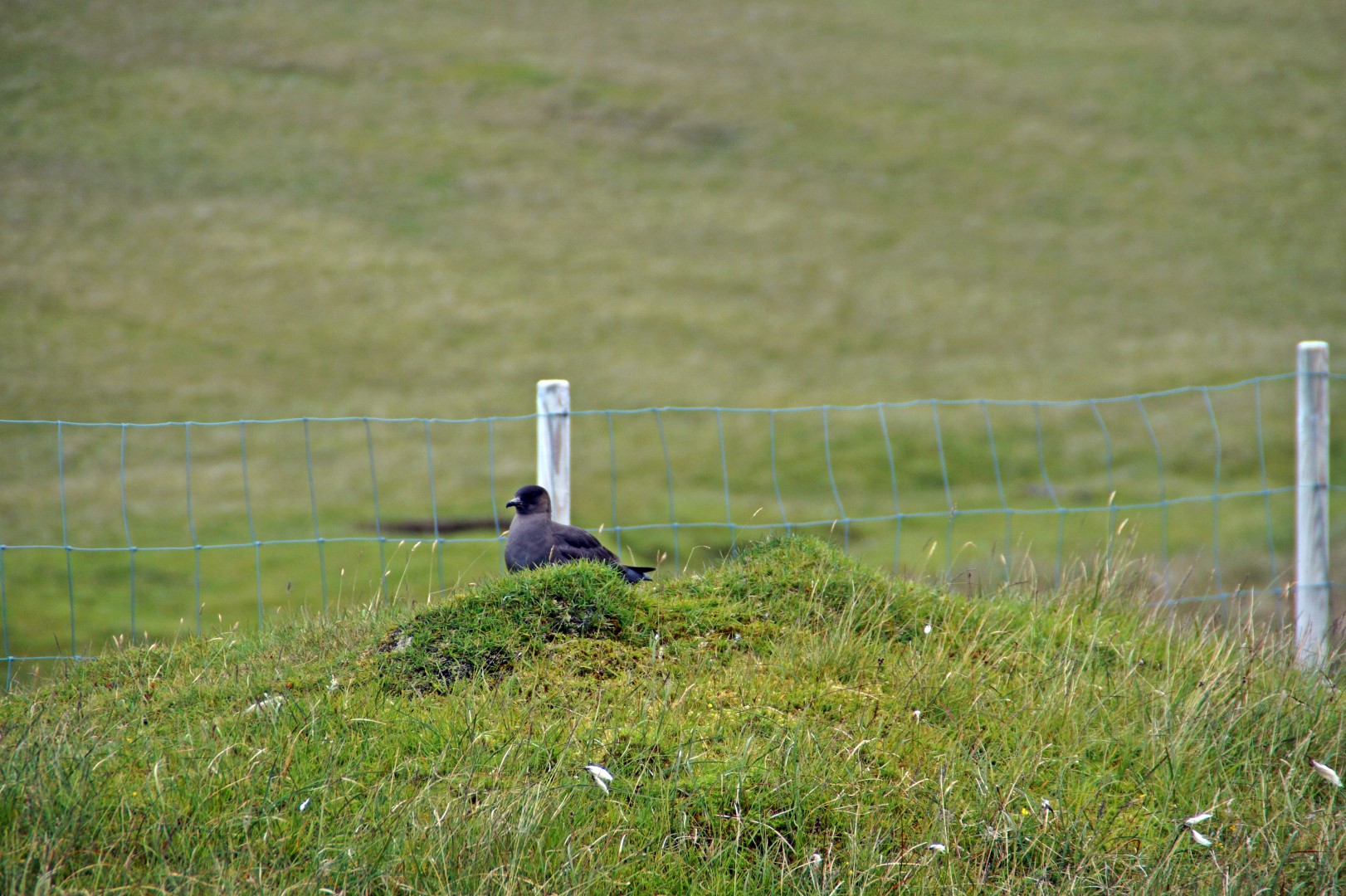
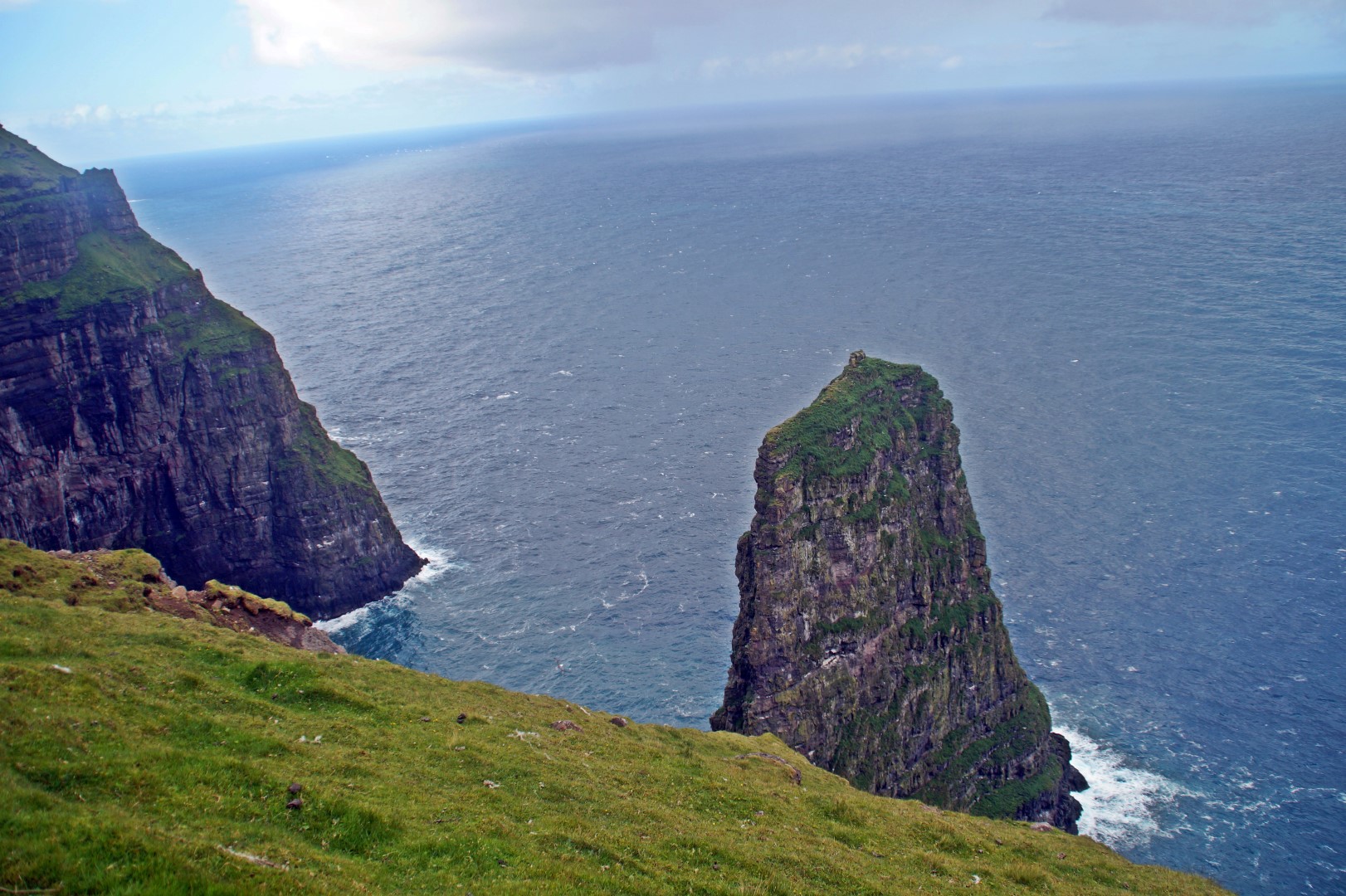
While we were looking out at the sea stack, the fog started coming in over the valley, so we decided to walk back to the car as quickly as we could – we didn’t want to get stuck in such a remote place in the fog!
Through the valley, over the mountain pass and down to the tiny village. A long, but successful hike was now over, four hours after it had begun. The fog came and went, but never enough for us to climb Slætteratindur as planned – maybe next year will be more successful! Hiking to Ambadalur was a great alternative to the mountain and I was happy to be able to show Katrine, Vianney and Gaëtane Gjógv, as it’s definitely one of the main must-sees in the Faroe Islands.
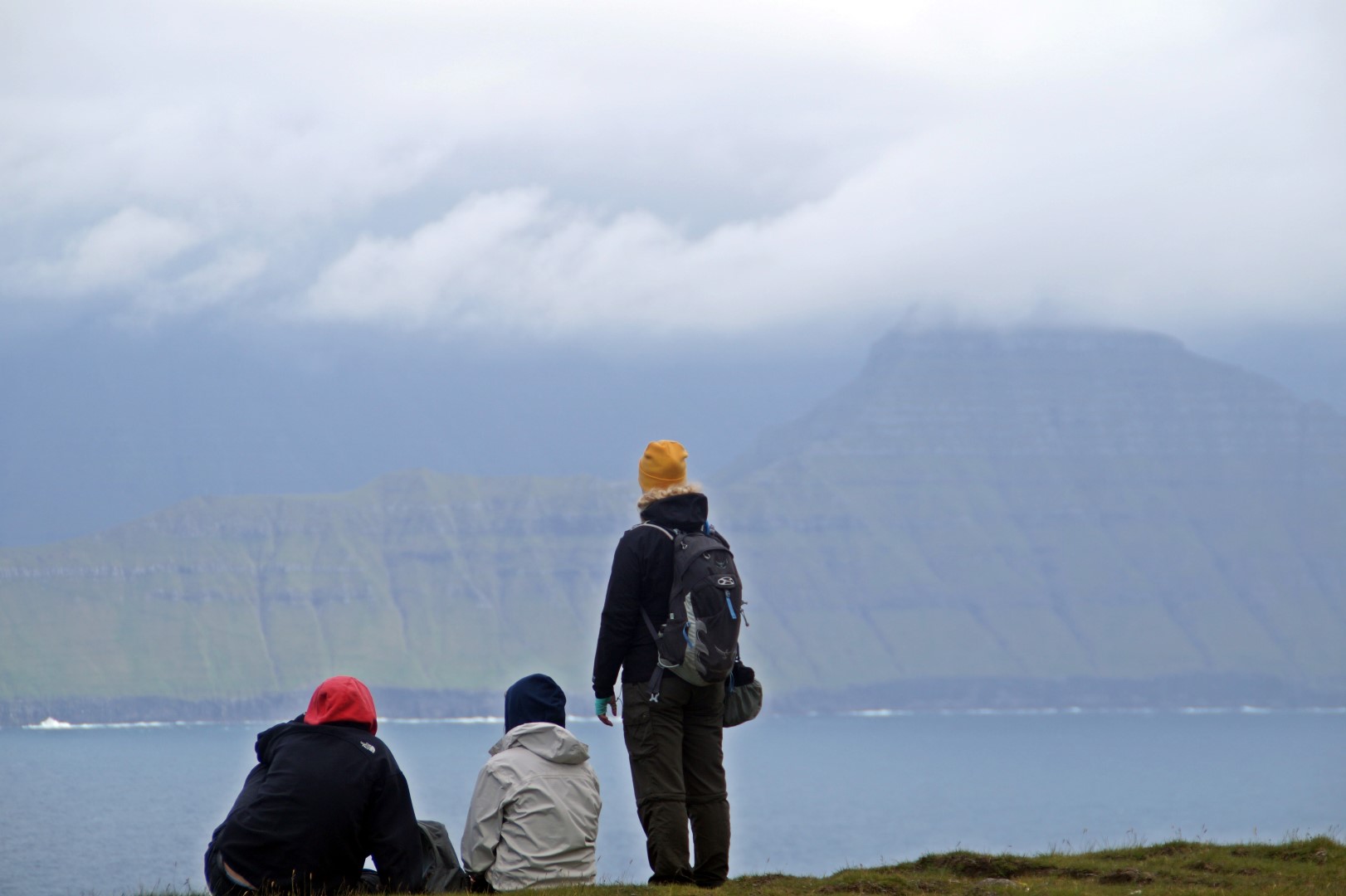
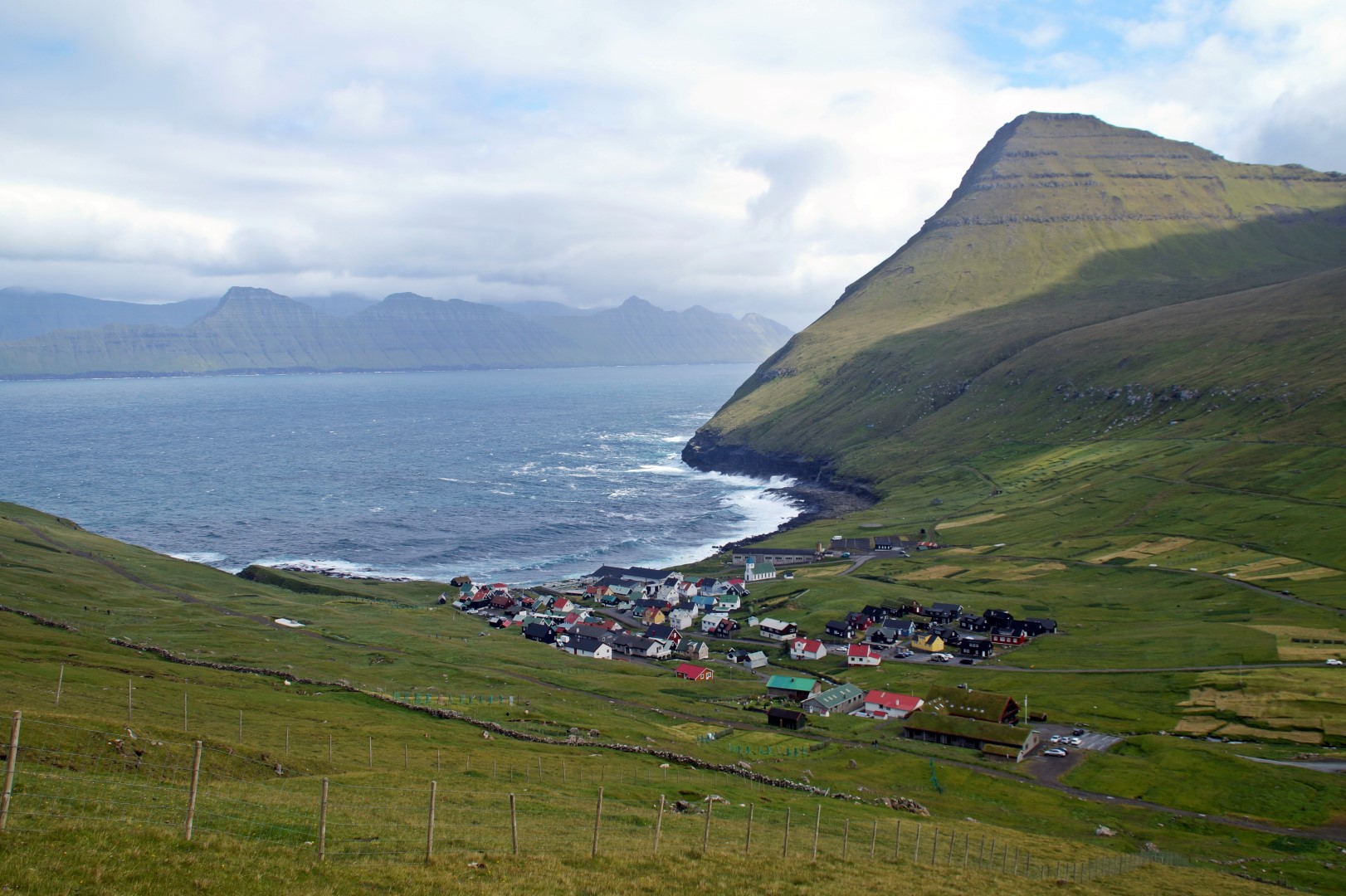
Tours to Gjógv
Gjógv is one of the prettiest villages in the Faroe Islands, but it’s not easy to get there without a rental car. There are many tours to choose from, though, for example this excellent photography tour which also includes the villages of Funningur and Tjørnuvík. Even with a rental, the roads to Gjógv are treacherous when icy, so you might want to consider this winter tour which also includes a visit to the famous Fossá waterfall!
Alternatively, if you only have a short time on the Faroe Islands, you can take the “Everything in One Day” tour, which covers much of the three main islands, and of course includes a visit to Gjógv.
If you fancy doing the hike described above with a guide, you can find a tour here!
Leave a Comment
Pingback: From Eiði to Gjógv: Exploring Northern Eysturoy on 06/10/2016
Pingback: Exploring the Faroe Islands: Eysturoy - Planes Terrains & Avocados on 06/10/2016
Pingback: Highlights of the Faroe Islands: The perfect two-week itinerary for hikers – I Live as I Dream on 06/10/2016
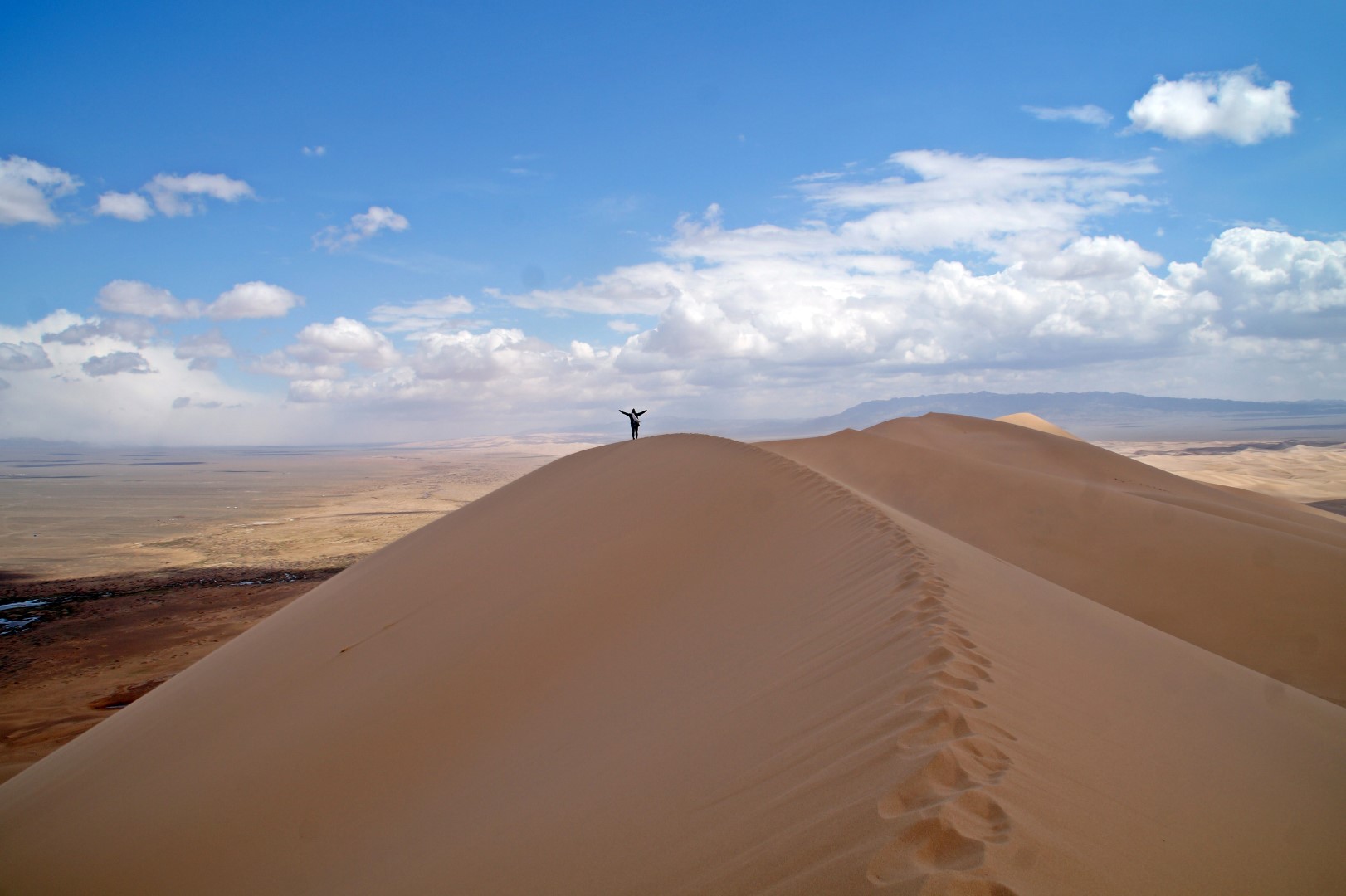

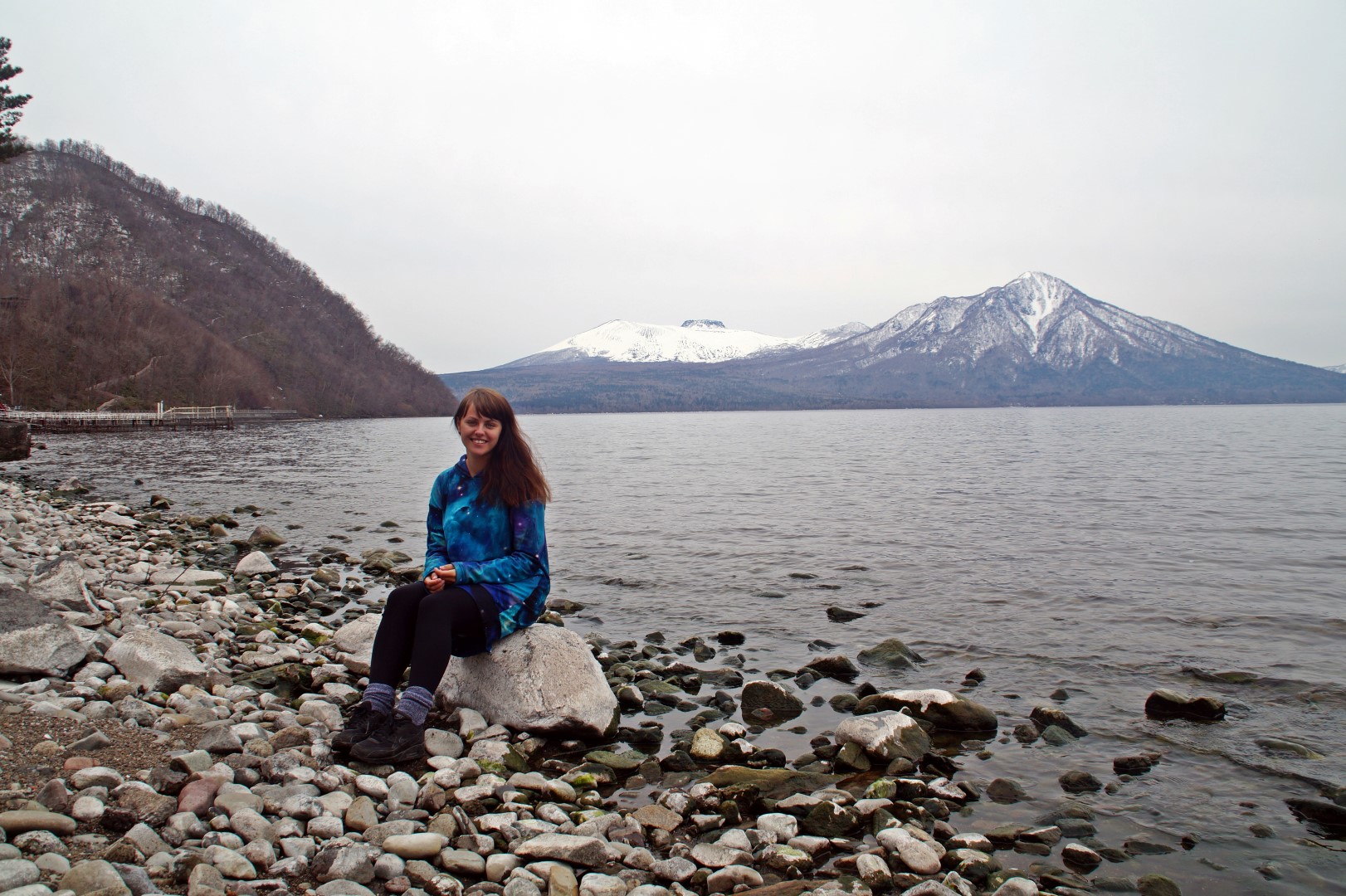
9 COMMENTS
Samantha
7 years agoDear Melissa,
I stumbled upon your blog and I am now raring to hike Gjógv ! Love your Ray Bradbury quote and your blogs are very inspiring.
We are city folks from Singapore and I wish to ask if you think we can tackle Gjógv considering we have never hiked before (well we did in Jeju island but they had stairs(!) for tourists to climb mt seongsan
Iichubong Peak). Is there a trekking map we can pick up from the tourist center? We are travelling with our 7 year old, which other treks should your recommend that is fairly easy for noobs like us?
Mykines is too expensive for us now that they require a certified guide so can you recommend where else we can go to watch puffin birds?
Thank you. Appreciate any input your would have.
Best regards
Samantha
Melissa Cherry
7 years agoHi Samantha, thanks for your kind words! 🙂
I think some hikes on the Faroe Islands would be perfect for you, as it’s quite easy to walk on the grass despite there being no stairs. If you visit the tourist center in Tórshavn, you’ll be able to get maps for the hikes, but you can also find a lot of information on hiking.fo.
The hike from Gjógv to Amdadalur is only slightly difficult in the beginning (going up), but is then quite easy. There is a track that you can follow to the top, and then you can decide where you want to walk from there, but I do recommend going through Amdadalur to the sea stacks. Other great and easy hikes are to Bøsdalafossur/Trælanípa on Vágar, out to the atlantic ocean through the laguna in Saksun at low tide, and from Tórshavn to Kirkjubøur (and take a free bus back to Tórshavn).
Mykines is definitely the best place to see puffins (and it’s guaranteed here), but I’ve also seen them in Gjógv, Skúvoy and Stóra Dímun. Skúvoy and Stóra Dímun are tiny islands that you need to take a helicopter to (or to Skúvoy by ferry from Sandoy), so Gjógv is probably your best bet, but unfortunately, I wouldn’t count on it, as Mykines is definitely their preferred place.
Have a great trip! If you have any more questions, feel free to ask 😀
Melissa
Samantha
7 years agoThank you so much for your prompt reply and invaluable input. All the best for your studies and wishing you blessings in all your endeavours.
Kind regards,
Samantha
Melissa Cherry
7 years agoYou’re very welcome 😀 thank you! Wish you all the best!
Ann
9 years agoAlways reading your post with my mouth open from the excitement! I can’t believe my eyes, such beautiful and dessert places. I think people who live there are the happiest, they just enjoy the beautiful surroundings. They must live there long and happy! I like your cozy house, it looks comfortable and hospitable! Wow, wow, wow!
Melissa Cherry
9 years agoThank you Ann! 😀
I agree! Living in the Faroe Islands is my dream, they do seem to be living the perfect life in harmony with nature.